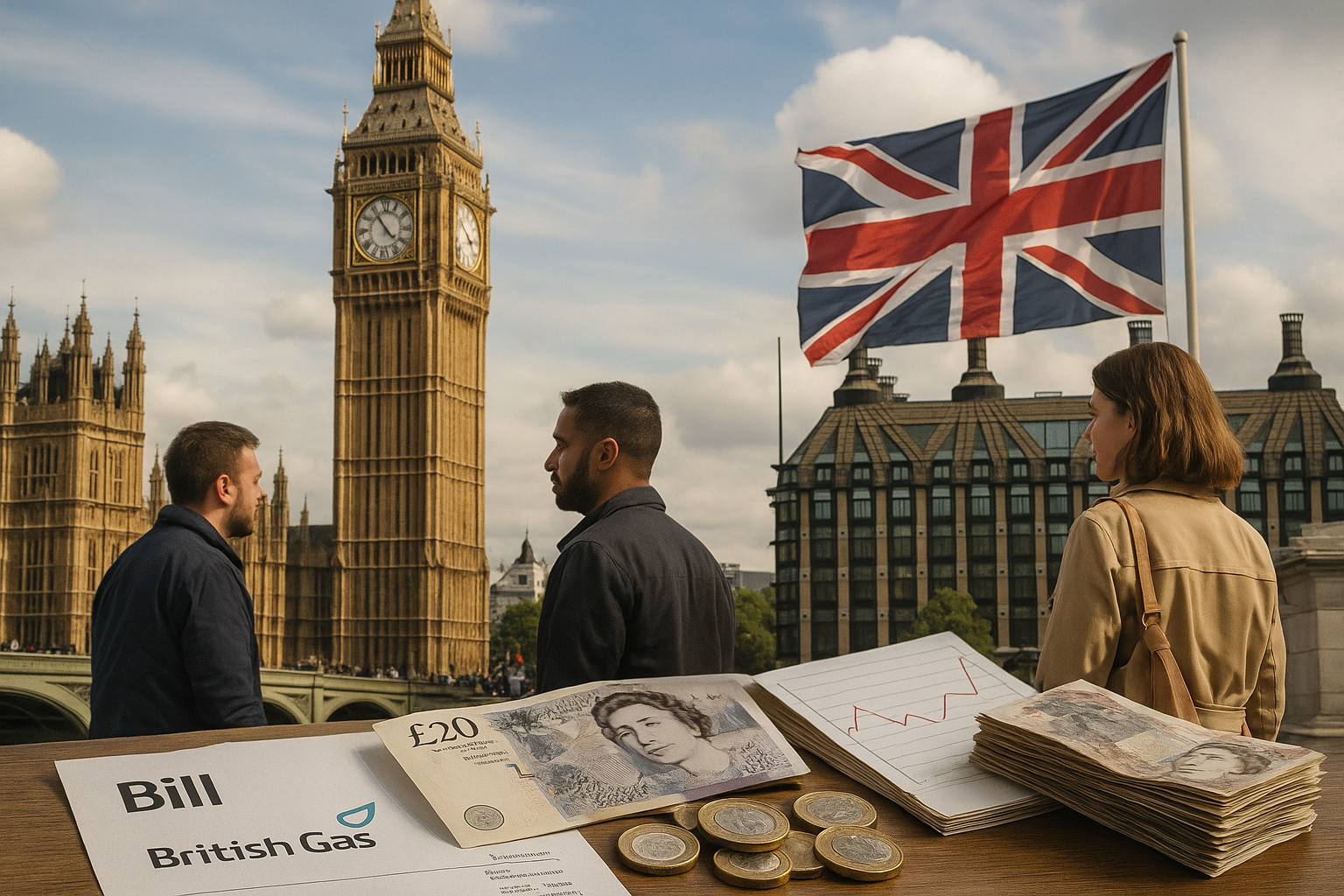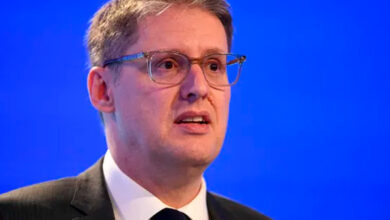2026 is just around the corner – and many people in the UK are asking the same question: will life finally get easier?
In this deep-dive, we look at what 2026 could bring for the UK’s money, politics and everyday life: from inflation, mortgages and jobs to who’s in power in Westminster and what it all means for your day-to-day reality.
1. 2026: A year of slow growth and cautious optimism
By the time we reach 2026, the UK is expected to be in a slow recovery phase – not booming, but more stable than the crisis years of 2020–2023.
Independent forecasters like the Office for Budget Responsibility (OBR), OECD, IMF and think tanks all predict modest growth, not a recession-dominated year:
- The OBR expects UK GDP growth to pick up to around 1.9% in 2026, helped by falling gas prices and easier monetary policy. Office for Budget Responsibility
- The IMF and OECD are more cautious, forecasting growth closer to 1.2–1.3% in 2026. House of Commons Library+1
- The Institute for Fiscal Studies estimates UK real GDP growth will average about 1.4% a year from 2026 onwards, as investment and consumption slowly strengthen. Institute for Fiscal Studies
What does this mean for you?
2026 is likely to feel better than the worst years of the cost-of-living crisis, but not like a golden economic age. Think: slightly more breathing room, but still needing to budget carefully.
2. Inflation, interest rates & the cost of living in 2026
Inflation: lower, but still a pressure
Most forecasters expect UK inflation to continue falling towards the 2% Bank of England target, but the journey isn’t completely smooth:
- The IMF expects UK inflation to be around 2.5% in 2026, which would still be one of the higher rates in the G7. Financial Times
- The Bank of England’s own projections in late 2025 suggest underlying inflation pressures are easing, though risks remain on both sides. Bank of England
So, by 2026 you can expect slower price rises than in 2022–2023, but bills and food prices will probably not go back to pre-pandemic levels.
Interest rates & mortgages
Higher interest rates have been painful for mortgage holders, but by 2026 several forecasts suggest a gentle fall:
- The EY Item Club expects the Bank of England to deliver two rate cuts by mid-2026, with rates stabilising around 3.5% afterwards. The Times
- Other outlooks suggest more cuts might follow if inflation behaves, but no return to the near-zero rates of the 2010s. Financial Times
For households:
- Fixed-rate deals coming up for renewal in 2026 may still be higher than old ultra-cheap deals, but less painful than peak 2023–2024 fixes.
- Renters could continue to feel pressure if landlords pass on borrowing costs and tax changes.
3. The UK economy in 2026: jobs, wages & public finances
Jobs & wages
With modest growth forecast, the labour market is likely to be steady rather than booming:
- Slower public spending growth and possible tax rises could weigh on some sectors. The Times+1
- However, areas like green energy, infrastructure, health, tech and AI may continue to create new jobs as government investment and private innovation expand.
Real wages (pay after inflation) are expected to recover gradually, but for many people, the hit from previous years will still be felt.
Public finances & taxes
Labour’s Chancellor, Rachel Reeves, has already signalled tough choices: welfare cuts, higher defence spending and a strong focus on “fiscal responsibility”. The Guardian
By 2026, several scenarios are possible:
- Targeted tax rises (for example on wealth, higher earners or specific sectors) to plug fiscal gaps.
- Further moves against tax evasion and avoidance. The Guardian+1
- Limited room for big giveaways – meaning don’t expect a huge tax-cutting Budget.
For ordinary people, this likely means continued pressure on public services, some reforms to benefits, and slow, careful changes rather than dramatic shocks.
4. Political life in 2026: Labour in power & key elections
A Labour-led UK government finding its feet
The 2024 general election brought a landslide victory for Labour under Keir Starmer, ending 14 years of Conservative rule. Wikipedia
By 2026, we can expect:
- Labour still in power at Westminster, working through its long-term plans on economic growth, planning reform, clean energy, and workers’ rights. Wikipedia+1
- Ongoing debates over NHS waiting lists, housing shortages, migration, and public sector pay.
- Continued focus on green transition policies, such as Great British Energy and infrastructure projects, though timelines and scale may be adjusted depending on the fiscal room. Wikipedia+1
2026 devolved elections: Wales & Scotland in the spotlight
2026 is a big year for devolved politics:
- Senedd (Welsh Parliament) election – 7 May 2026: Wales votes for 96 members under a reformed system, with more MSs and a stronger focus on scrutiny. Wikipedia+1
- Scottish Parliament elections are also scheduled around May 2026. Electoral Commission
These elections will shape:
- The future of Welsh and Scottish relationships with Westminster.
- Debates on independence, devolution of more powers, and local priorities (health, education, transport, language, environment).
Expect 2026 to bring heated campaigns, coalition talks in devolved legislatures, and plenty of discussion about how “fair” the UK union feels to different nations.
5. International pressures: trade, tariffs & global politics
The UK in 2026 won’t exist in a bubble. Global politics will continue to influence life here:
- The return of US tariffs under Donald Trump’s second term is already flagged as a risk to UK growth and trade; the OBR and OECD warn this could reduce GDP and keep inflation higher. The Guardian+1
- Tensions over global shipping routes, energy supplies and geopolitics may keep energy and food prices volatile. ib.barclays+1
This means that even with better domestic policy, 2026 could feel fragile, with external shocks always possible.
6. Everyday life in the UK in 2026: how it may feel
Putting the forecasts together, 2026 in the UK is likely to feel like this:
1. Money & cost of living
- Prices still higher than pre-Covid, but rising more slowly.
- Energy bills may be more predictable, especially if wholesale prices fall and government schemes stabilise.
- Mortgages still more expensive than in the 2010s, but slightly easier than 2023–24 peaks.
2. Work & careers
- Stable but competitive job market.
- Growing demand for skills in tech, cyber security, AI, health, care work, construction, and green energy.
- Continued debate over flexible work, remote jobs and work–life balance.
3. Housing & renting
- Strong political pressure to build more homes, reform planning and protect renters. Wikipedia
- Possible new rules around evictions, landlord responsibilities and standards.
- House prices may grow slowly, but affordability will stay a key issue.
4. Public services & welfare
- NHS under pressure, but with ongoing investment and reform attempts.
- Changes to benefits eligibility and conditions, especially around work and sickness, as announced in recent fiscal plans. The Guardian+1
7. How households can prepare for 2026
No one can predict the future perfectly, but based on current forecasts, here are practical steps that make sense for many people:
- Review your mortgage or rent position
- If you’re on a fixed rate ending in 2026, compare options early.
- Renters: plan for potential rent increases and know your rights.
- Build a small emergency buffer
- Even £300–£500 can make a big difference if bills or rent jump unexpectedly.
- Up-skill for the new job market
- Look at free or low-cost courses in areas with growing demand: digital skills, AI, green tech, cyber security, health & social care.
- Keep an eye on tax and benefit changes
- Follow Budget and Spring Statement announcements – small policy tweaks can impact take-home pay, benefits or pension contributions.
- Diversify income where possible
- Side hustles, freelance work, online projects or retraining may give you more resilience if the job market tightens.
8. Key takeaways: What 2026 in the UK will probably look like
- Economy: Modest growth, no boom – but better than the recent years of crisis. Financial Times+3Office for Budget Responsibility+3Institute for Fiscal Studies+3
- Inflation & rates: Inflation lower but not gone; interest rates likely easing slowly, not crashing back to zero. The Times+2Financial Times+2
- Politics: Labour in power at Westminster, devolved elections in Scotland and Wales reshaping the union conversation. Wikipedia+2Wikipedia+2
- Everyday life: Still feeling the weight of the cost-of-living crisis, but with slightly more stability and clearer long-term direction.
2026 won’t magically fix everything, but it is shaping up to be a transition year: from firefighting crises to slowly rebuilding stability – economically, politically and in everyday life.
FAQ:
Q1: Will the UK be in recession in 2026?
Most major forecasters (OBR, IMF, OECD, IFS) currently expect positive but low growth in 2026, not a recession, although risks remain from global trade tensions and high debt. Financial Times+4Office for Budget Responsibility+4House of Commons Library+4
Q2: Are prices in the UK expected to fall by 2026?
Prices are unlikely to fall back to 2019 levels. Instead, inflation is forecast to slow, meaning prices rise more slowly rather than dropping. Office for Budget Responsibility+2Financial Times+2
Q3: Who will govern the UK in 2026?
After Labour’s landslide victory in the 2024 general election, Keir Starmer’s government is expected to still be in power in 2026, barring unexpected events. Wikipedia
Q4: What big political events will happen in 2026?
The Senedd election in Wales and Scottish Parliament election are due in May 2026, shaping devolved politics and debates over the future of the UK union.






